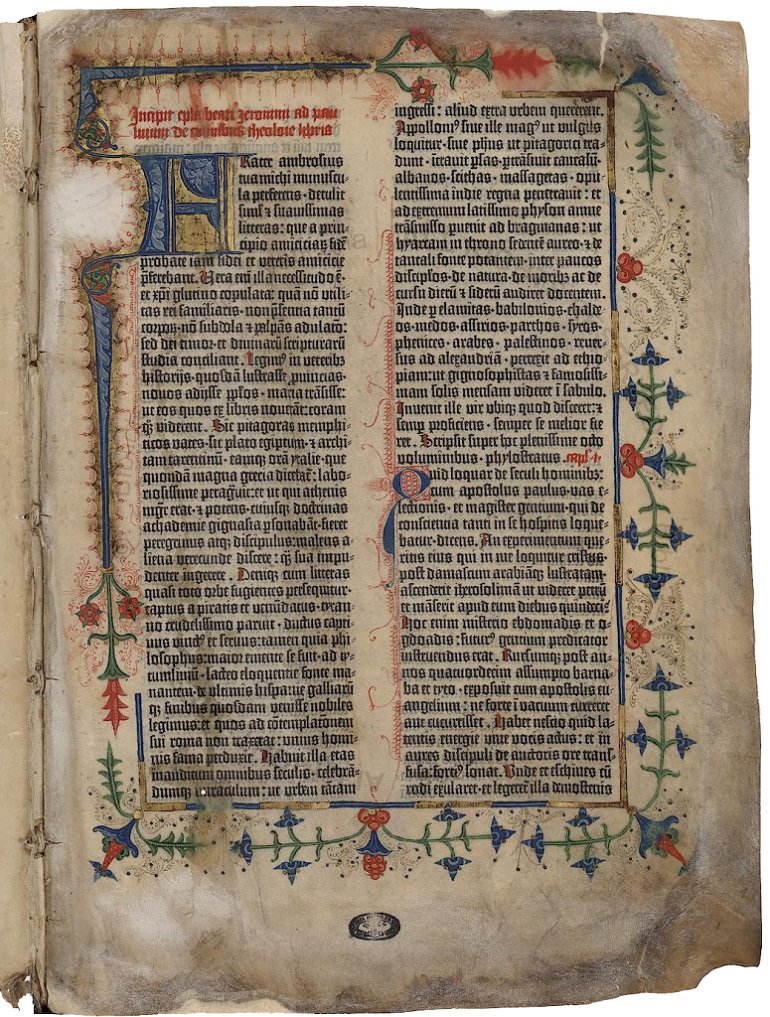Latin Palaeography

This course aims to provide the tools necessary to read and accurately transcribe manuscript and printed sources (in Latin) from the late medieval period to the late seventeenth century. Since these are written in various kinds of scripts (gothic, humanistic, etc.), some time will be spent examining each of these. The course starts from printed materials, which are somewhat easier to navigate and usually contain fewer abbreviations, and will then work its way back from the seventeenth to the fifteenth and fourteenth centuries, considering different types of sources (e.g. letters, literary and philosophical texts, official documents). We will also consider different approaches to transcribing and editing manuscript material, a pressing question in an age when an increasing number of (manuscript) sources have been digitised and can be found online.
Although the course will inevitably include references to book history and production as a context, the focus will be on deciphering and transcribing various kinds of writing samples taken from a range of geographical regions including - but not limited to - Italy, the British Isles, and the Low Countries. A solid grasp of Latin (at least intermediate level) is required. (Participants wanting a refresher may wish to take, alongside this course, Latin for Research in the Humanities.) Although the course is open to mature researchers who wish to develop their facility with original Latin sources, it is especially geared to postgraduate students and early career researchers. The course will follow a seminar format and will largely rely on homework transcription exercises, to be discussed in class along with other texts. It will culminate in a test giving participants an idea of their final level of attainment.
All classes will be taught virtually via interactive seminars on Microsoft Teams, Thursdays, 5-6.30pm (British time). Please note that the UK changes from BST to GMT on 29 October, so classes from Week 5 onwards are GMT. There is a minimum (and also a maximum) enrolment for this course. Classes are expected to start week beginning 9 October 2023.
This course, run by Warwick's Centre for the Study of the Renaissance, does not confer university credits. However, on the basis of students' performance in the final test, the CSR can issue a certificate of completion and of having passed the course.
Participants will pay £200 for the course before the beginning of term. Participants whose institution belongs to the Newberry Library Consortium may be eligible to receive consortium grants to cover the cost of the course. (Contact your local consortium representative for details.) Warwick PhD Students will not have to pay the course fees.
To apply for this course (deadline, 8:00am BST on 18th September 2023), please complete the form here.
If you have specific queries about the course content, please contact Floris Verhaart. For other queries, contact the Centre administrator on renaissance@warwick.ac.uk
Course Structure:
| Week of Term | Date | Topic |
| 1. | 5 Oct | No class. |
| 2. |
12 Oct. | Introduction. Early printed books (I): working with printed materials. |
| 3. | 19 Oct. | Early printed books (II): transcribing printed materials. |
| 4. | 26 Oct. | Sixteenth- and seventeenth-century hands (especially letters). |
| 5. | 2 Nov | Sixteenth- and seventeenth-century hands (official documents, secretary, bastard hand). |
| 6. | READING WEEK (no class) | |
| 7. | 16 Nov. | Humanist hands (I). |
| 8. | 23 Nov. | Humanist hands (II). |
| 9. | 30 Nov. | Gothic hands. |
| 10. | 7 Dec. | Test. |
Course aimsLink opens in a new window
Bibliography
Useful Web Resources

